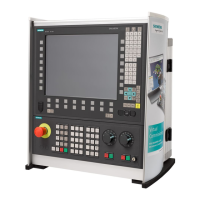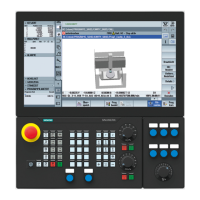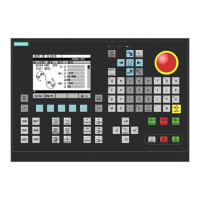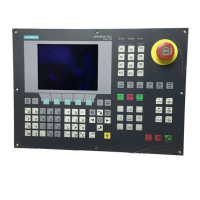5
08/2005 ShopTurn Functions
5.6 Contour millin
5
♥ Siemens AG, 2005. All rights reserved
SINUMERIK 840D sl Operation/Programming ShopTurn (BAT) – 08/2005 Edition 5-269
Contours for spigots
Contours for spigots must be closed, i.e. the start point and end point
of the contour are identical. You can define multiple spigots, which
can also overlap. ShopTurn interprets the first contour specified as a
blank contour and all others as spigots.
The machining of contour spigots is generally programmed as follows:
1. Enter the blank contour
i.e. the outer limits of the material. The tool moves at rapid traverse
outside this area. Material is then removed between the blank
contour and spigot contour.
2. Enter contour for the spigot
You enter the contour for the spigot after the blank contour.
3. Clear contour spigot (roughing)
The contour spigot is cleared.
4. Remove residual material (roughing)
As it mills the spigot, ShopTurn automatically detects residual
material that has been left behind. A suitable tool will allow you to
remove this without having to machine the complete spigot again.
5. Finish contour spigot (edge/base finishing)
If you programmed a finishing allowance for roughing, the spigot
edge/base is machined again.
6. Chamfer contour spigot
If you have planned edge breaking, subsequently chamfer the
workpiece.
Clamp spindle
When milling contours, it can be useful, for example, during vertical
insertion into the material, to clamp the spindle to avoid spindle
distortions. The "Clamp spindles" function must be set up by the
machine manufacturer.
The machine manufacturer also specifies whether ShopTurn will
clamp the spindle automatically if this would facilitate machining, or if
you can decide the types of machining for which the spindle should be
clamped.
Please also refer to the machine manufacturer's instructions.
If you are to decide the types of machining for which the spindle is to
be clamped, the following applies:
You should note that when machining in planes End face/End face C
and Peripheral surface/Peripheral surface C, clamping is automatically
released after insertion. When machining in planes End face Y and
Peripheral surface Y, on the other hand, clamping is modal, i.e. it
remains activated until the machining plane is changed or clamping is
deselected in the "Straight circle" Æ "Tool" menu.
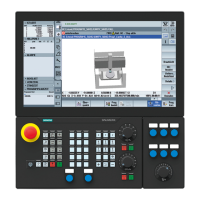
